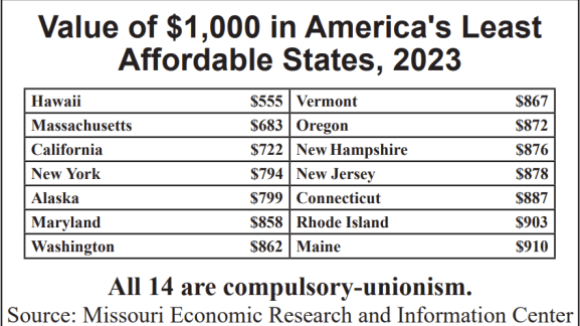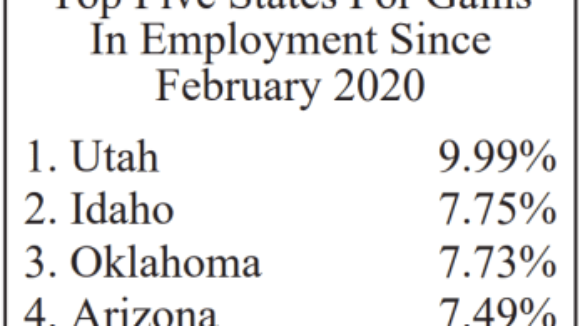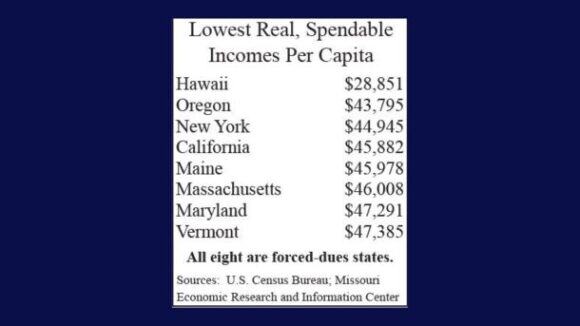Banning Compulsory Dues Curbs Cost of Living
On average, forced-unionism states are 23.2% more expensive to live in than Right to Work states. And decades of academic research show that compulsory unionism actually fosters a higher cost of living.
While federal workers cannot bargain over pay and benefits, postal worker unions have that power. John Hayward sees the connection between the USPS union bargaining agreements and the need for another postal bailout:
Tad DeHaven of the Cato Institute pointed out in an April 2010 article, “The average postal employee earns $83,000 a year in total compensation and 85 percent of its workforce is covered by collective bargaining agreements. Labor accounts for 80 percent of the USPS’s cost structure.”
Collective bargaining has won job protection for postal employees that makes it very difficult to adjust the USPS business model. It’s extremely difficult to fire, or even reassign, much of the workforce. There are actually rules that require management to put underemployed postal workers in holding rooms, where they wait for tasks to perform, rather than trimming any of that $83,000 per year fat.
Another charming union protection described by DeHaven is that when binding arbitration with the union is called for, “there is no statutory requirement for the USPS’s financial condition to be considered.” No matter how broke the postal service becomes, negotiations must always proceed as if it were flush with cash.
Like every other public employee union, postal workers have won fabulous, gold-plated retirement benefits through collective bargaining. The cost of funding these benefits has become unsustainable. The current Postmaster General, Patrick Donahoe, wants to reclaim money he says the Postal Service overpaid into the federal retirement system, but such a move make the rest of the federal government even more insolvent that it already is, and would achieve little except delaying the financial crash of the postal system for a couple of years.
Without a cash infusion, Donahoe says, “the Postal Service will be forced to default on a financial obligation to the federal government, due at the close of the fiscal year on September 30, 2011.”

On average, forced-unionism states are 23.2% more expensive to live in than Right to Work states. And decades of academic research show that compulsory unionism actually fosters a higher cost of living.

Strong employment gains in Right to Work states are the reason more Americans are working now than pre-COVID.

Where forced union dues are permitted, workers and other people end up with less purchasing power.